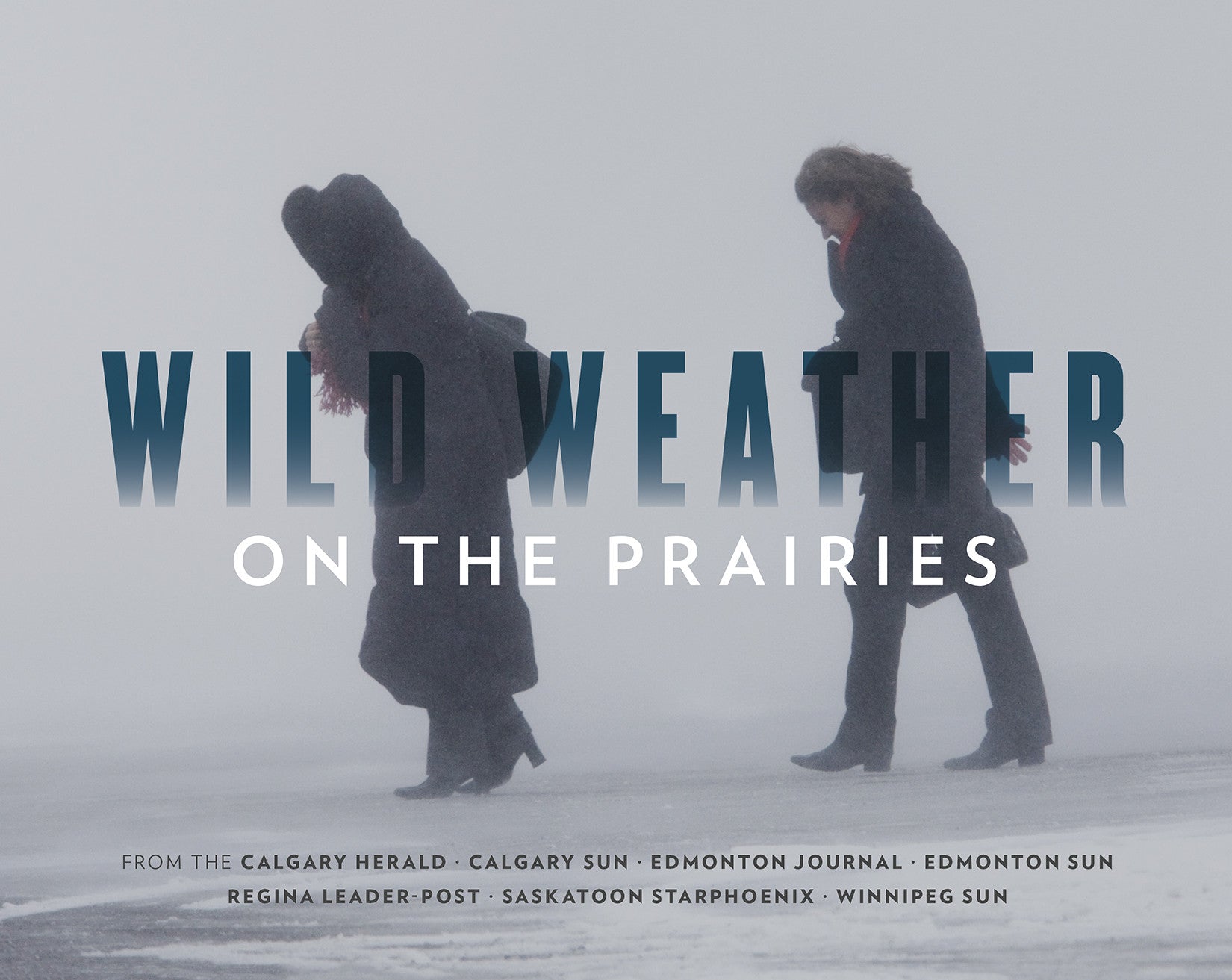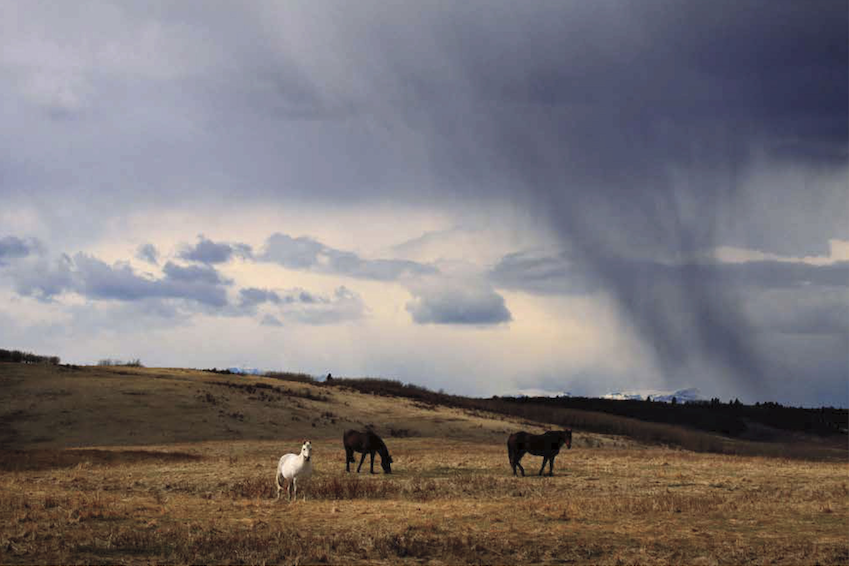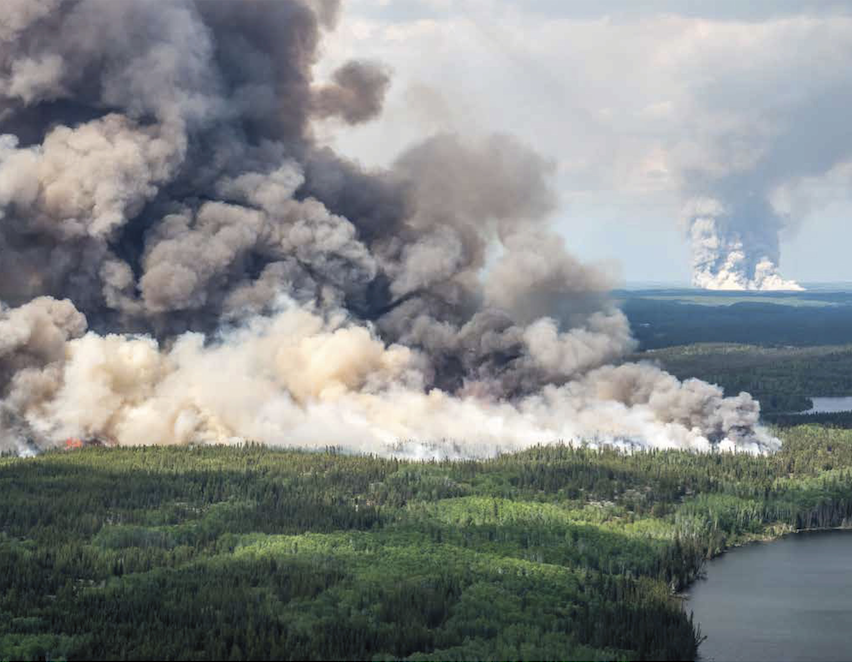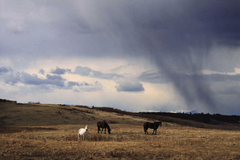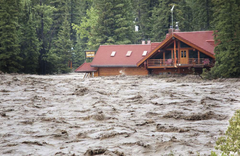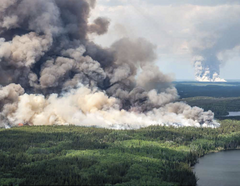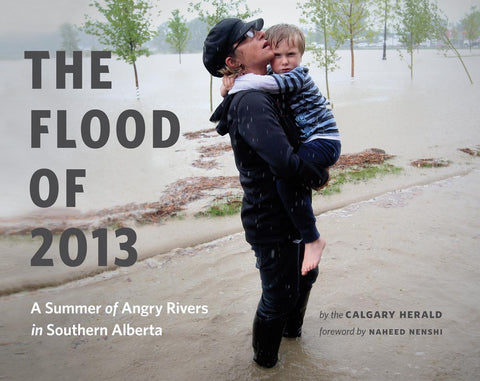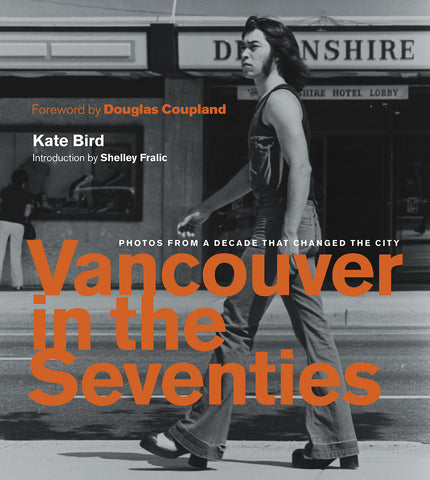Wild Weather on the Prairies
- ISBN: 9781771643160
- Tags: Calgary Herald, Monica Zurowski, Nature & Environment, Photography,
- Dimensions: 11 x 8.75
- Published On: 08/02/2017
- 160 Pages
A photographic record of the weather—dangerous, devastating, and often beautiful—that shapes the Prairies and the people who live there.
Nothing brings Prairie people together like the weather. It’s a common tie and a topic discussed almost daily at water coolers in the region. When weather events rage across Alberta, Saskatchewan, and Manitoba, there are times when nothing and no one is safe. But something positive rises from the resulting debris, mud, and ashes. Resolve and grit take over and Prairie folk rebuild their communities and lend a helping hand to both neighbors and strangers.
With text written by longtime Calgary Herald editor Monica Zurowski and two hundred striking color photographs pulled from the archives of the Calgary Herald, Calgary Sun, Edmonton Journal, Edmonton Sun, Regina Leader-Post, Saskatoon StarPhoenix, and Winnipeg Sun, this book celebrates the indomitable spirit of Prairie people as they face tornadoes, floods, fires, blizzards, hailstorms, dust storms, and heat waves.
Monica Zurowski, deputy editor of the Calgary Herald and Calgary Sun, has worked as a journalist on the prairies for 30 years.
The Calgary Herald began publishing in 1883, when Calgary's population was just four hundred people. The Calgary Herald is proud to have chronicled the history of one of Canada's most vibrant and enterprising cities and is now one of Canada's most recognized major media brands, a division of Postmedia Network Inc. In addition to the dozens of national and international journalism awards it has received, the Herald was given the 2013 Award for Outstanding Corporate Philanthropist by the Association of Fundraising Professionals.
"Wild Weather is full of beautiful, striking, and dramatic images, mirroring much of what life is like on the Prairies."
—Hayley Wickenheiser, Five-time Olympic medalist
"These great images and profound words remind us that prairie people have been drawn here for thousands of years by the beauty and bounty of our land and water. Sometimes, though, this place can be harsh, unforgiving, or even frightening. It's part of what defines us. But we know no matter what the weather, we'll make it through—together."
—Naheed Nenshi, Mayor of Calgary
From Introduction: Weathering the Storm—Life on the Prairies
Wounds heal, but scars remain. Three decades have passed since a tornado ripped through Edmonton, killing twenty-seven people and injuring hundreds more. The city has rebuilt and repaired itself in the years since the 1987 natural disaster. The injured have, mostly, been rehabilitated. But scars persist for many of those who survived the twister, which carved a path of carnage, wrecked homes, and wrenched hearts.
The stories from survivors still resonate as hellish thirty years later. The twister, for example, ripped a three-month-old baby from his mother’s arms and hurled him into a puddle, fracturing his skull, severing his spine, and leaving him paralyzed. It sucked the roof off a tool shop, collapsed the cement walls, crushed the twenty or so people inside, and indiscriminately took lives. The tornado flattened businesses, tossed cars about like they were toys, smashed homes, and shattered families, none more so than the family of Arlean Reimer.
Because Arlean was running late at work the day of the tornado, she wasn’t home when the twister roared through Edmonton’s Evergreen Mobile Home Park. Tragically, her husband Marvin, along with their three children—Dianne, thirteen, and elevenyear- old twins Darcy and Dawn—were there. All four perished in the disaster. Their trailer was nearly obliterated. Days later, a large crane hoisted the splintered remains of the Reimer trailer so Arlean could retrieve a few family belongings that remained intact: her children’s Cabbage Patch Kids dolls and her husband’s wedding ring, which had been sitting on a dresser awaiting a repair.
The tragedy is a sad chapter in the story of the Edmonton tornado, but it’s also a reflection of how weather profoundly impacts the lives of people on the Prairies. It’s a region where history and growth are inextricably linked with the unpredictable narrative of the weather.
Weather is the tie that binds us, unites us, and gives us something to discuss around the water cooler. On any given day, we can love it, hate it, or love to hate it. Whatever we think about the weather, one thing is certain—it defines us. Coping with a particularly harsh day, for example, is a badge of honour, worn proudly by those who make their home on the Great Plains, an endless swath of prairie land with open skies and picturesque panoramas.
Some parts of the world possess climates that can best be described as “even.” They receive even amounts of rainfall, little variance in temperatures, and predictable amounts of sunshine. It’s a different case on the Great Plains, which stretch up through the central United States and into the Prairies of Alberta, Saskatchewan, and Manitoba. The region experiences extreme temperature fluctuations and unexpected weather events several times each year. Many words can be used to describe the weather here—harsh, severe, fickle. Boring, however, isn’t one of them.
At times, the weather becomes downright biblical in intensity. Massive floods sweep across the land. Wicked winds uproot trees, structures, and people. Icy snowstorms bury entire communities. Fires roar across grasslands and forests. The events don’t signal an apocalyptic end of the world. Rather, they’re just part of the wild weather of the Prairies.

